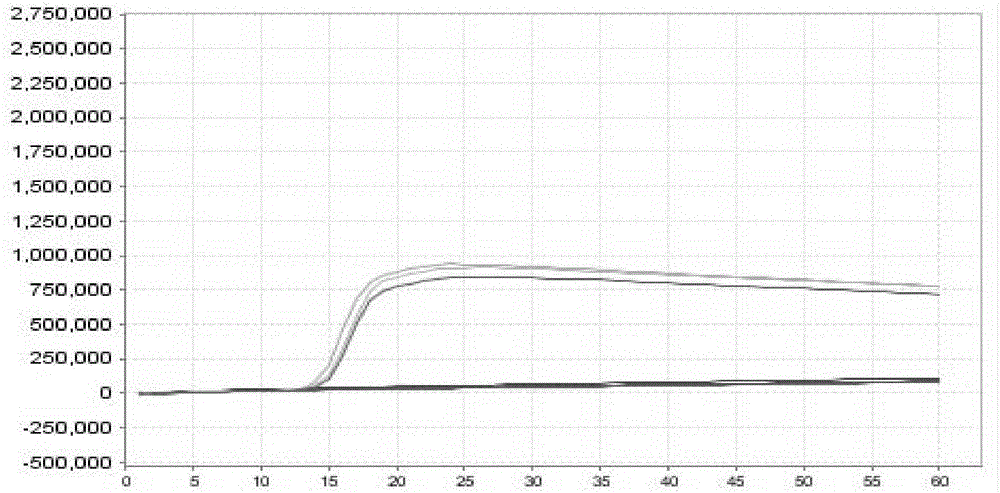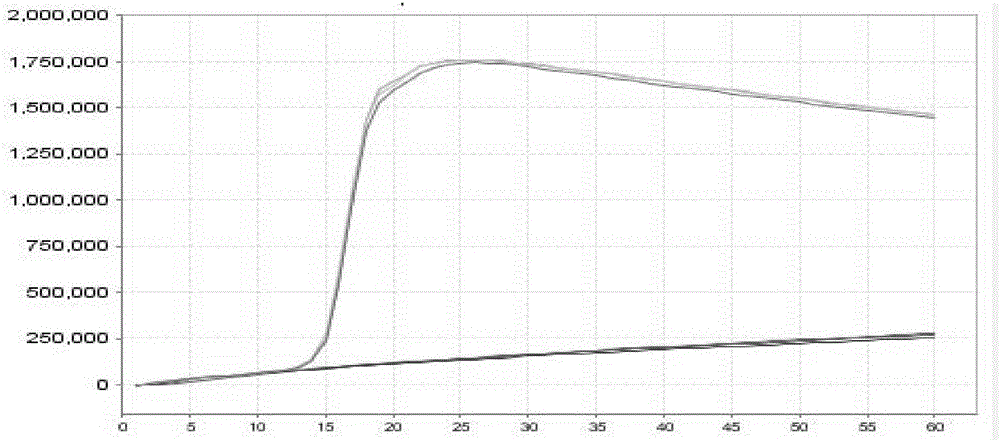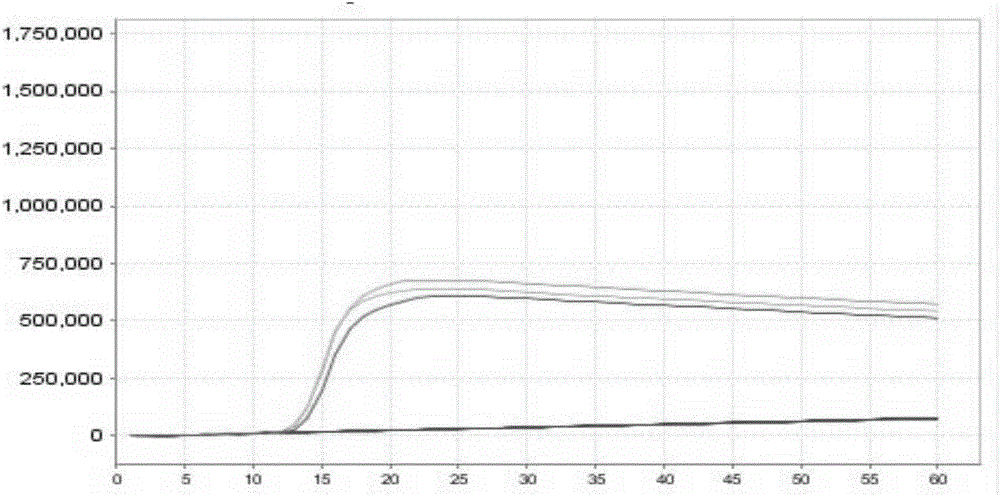Primer combination capable of identifying enterovirus type 71 and application of primer combination
A combination of primers and enterovirus technology, applied in the field of biological detection technology, can solve the problems of inapplicable sample on-site detection, unfavorable grass-roots promotion, and high operating requirements for testing personnel.
- Summary
- Abstract
- Description
- Claims
- Application Information
AI Technical Summary
Problems solved by technology
Method used
Image
Examples
Embodiment 1
[0127] Embodiment 1, primer design and preparation
[0128] A large number of sequence analyzes and comparisons were carried out to obtain several primers for identifying enterovirus 71. Preliminary experiments were carried out on each primer to compare performances such as sensitivity and specificity, and finally three sets of primer combinations for identifying enterovirus 71 were obtained.
[0129] Primer combination I for identifying enterovirus type 71, including a pair of outer primers (F3-1, B3-1), a pair of inner primers (FIP-1, BIP-1) and a pair of loop primers (LF-1, LB-1), each primer sequence is as follows (5'→3'):
[0130] F3-1 (sequence 1 of the sequence listing): GCCAACTGGGACATAGA;
[0131] B3-1 (sequence 2 of the sequence listing): AGGGTCTGACAGCTTGACAA;
[0132] FIP-1 (SEQ ID NO: 3 of the SEQUENCE LISTING): GGTGTGCACGCAACAAAAGTGA-GCGCAAATGCGTAGAAAGG;
[0133] BIP-1 (SEQ ID NO: 4 of the SEQUENCE LISTING): TATGTTTGTGCCACCTGGAGCC-GGGGTTAGTGGCGGTTTG;
[0134] ...
Embodiment 2
[0150] Embodiment 2, primer optimization
[0151] 1. Manually prepare the EV71 armored RNA standard solution, and the RNA sequence is shown in sequence 19 in the sequence table.
[0152] 2. Take the EV71 armored RNA standard solution obtained in step 1, heat it at 95°C for 1min, use the heated RNA standard solution as a template, and use the primer combination I, primer combination II and primer combination III prepared in Example 1 respectively. RT-LAMP amplification.
[0153] When using primer combination I, RT-LAMP amplification reaction system (10 μL): 5 μL Reaction Mix., 0.4 μL Enzyme Mix., 1.09 μL mixed primers, 0.24 μL Eva-Green, 2 μL template RNA, 1.27 μL ddH 2 O. Mixed primers are mixtures of primers in primer combination I. In the reaction system, the final concentration of F3-1 is 0.3 μM, the final concentration of B3-1 is 2 μM, the final concentration of FIP-1 is 2.4 μM, the final concentration of BIP-1 is 2.4 μM, and the final concentration of LF-1 is 1 μM, th...
Embodiment 3
[0158] Embodiment 3, reaction temperature optimization
[0159] 1. Manually prepare the EV71 armored RNA standard solution, and the RNA sequence is shown in sequence 19 in the sequence table.
[0160] 2. Take the EV71 armored RNA standard solution obtained in step 1, heat it at 95° C. for 1 min, use the heated RNA standard solution as a template, and use the primer combination I prepared in Example 1 to perform RT-LAMP amplification.
[0161] RT-LAMP amplification reaction system (10 μL): 5 μL Reaction Mix., 0.4 μL Enzyme Mix., 1.09 μL Mixed Primer, 0.24 μL Eva-Green, 2 μL template RNA, 1.27 μL ddH 2 O. Mixed primers are mixtures of primers in primer combination I. In the reaction system, the final concentration of F3-1 is 0.3 μM, the final concentration of B3-1 is 2 μM, the final concentration of FIP-1 is 2.4 μM, the final concentration of BIP-1 is 2.4 μM, and the final concentration of LF-1 is 1 μM, the final concentration of LB-1 was 1 μM.
[0162] The reaction program ...
PUM
 Login to View More
Login to View More Abstract
Description
Claims
Application Information
 Login to View More
Login to View More - R&D
- Intellectual Property
- Life Sciences
- Materials
- Tech Scout
- Unparalleled Data Quality
- Higher Quality Content
- 60% Fewer Hallucinations
Browse by: Latest US Patents, China's latest patents, Technical Efficacy Thesaurus, Application Domain, Technology Topic, Popular Technical Reports.
© 2025 PatSnap. All rights reserved.Legal|Privacy policy|Modern Slavery Act Transparency Statement|Sitemap|About US| Contact US: help@patsnap.com



